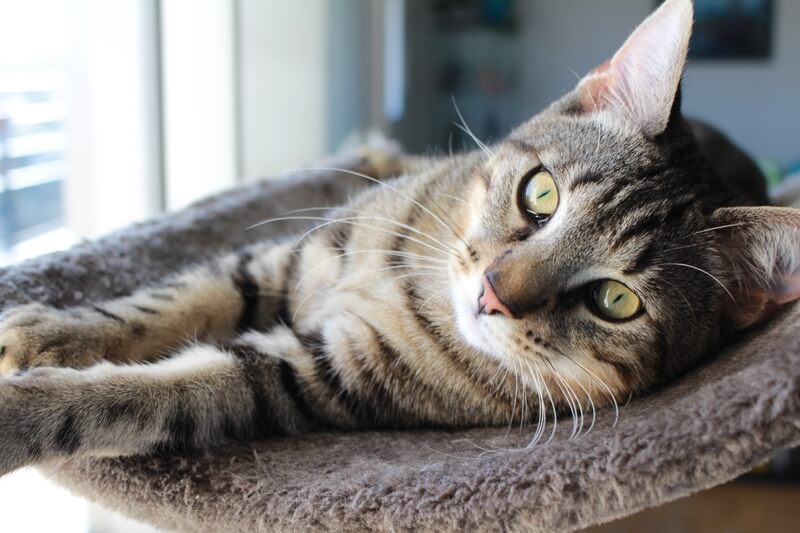Domestic Shorthair Cat Facts
Domestic shorthair cats are the most popular of house cats. Learn about interesting cat facts, cat health, and types of domestic shorthair cats.
When my friend’s cat Tyler started making frequent trips to the litter box, it didn’t seem like a big deal at first. But then his cat began peeing outside the box and all around the house. He was also occasionally crying out when he went. Obviously, something was wrong, so off to the veterinarian they went.
Tyler’s symptoms could be caused by a UTI or an FLUTD. Seems like letter soup, right? So let’s explain:
These are actually not as common as you might think in cats. It’s more often seen in senior cats who are 10-years-old and up.
It’s really a catch-all term for a collection of symptoms that can result from a number of urinary tract issues. It’s more prevalent in cats than UTIs, especially when it comes to younger felines.
FLUTD is also called feline idiopathic cystitis. While this name certainly doesn’t roll off the tongue, it makes sense when you break it down. Cystitis refers to inflammation of the bladder and idiopathic basically means there is no known cause.
It turns out Tyler had a UTI, which is not surprising since he is 14-years-old. Luckily for him, he got the care he needed and recovered in about a week.
The veterinarian suspected that Tyler’s UTI was the result of a bacterial infection, which is the most common reason for this condition. UTIs can also be brought on by a fungus or parasitic infection, but these are rare cases. On the other hand, FLUTD can have a number of causes, including:
It’s also thought that stress can play a role in developing a urinary tract issue. Cats are typically creatures of habit and can get stressed out if their routines are interrupted, for instance, by a new baby in the family, the addition of another pet, or a move to a different house.
Cats are notorious for masking their symptoms or hiding around the house when they’re ill, so you might not notice the signs of a urinary tract issue, particularly in the early stages. Symptoms can include:
Urinary tract issues can be very painful for your kitty. It’s important you seek treatment as soon as possible if you notice these signs. A blockage can also become a life-threatening emergency if left untreated.

In addition to a full physical exam, there are several other diagnostic tools your veterinarian might use to help determine whether your cat has a UTI or FLUTD:
The fees for the veterinary exam and diagnostic tests can all be covered by an ASPCA Pet Health Insurance plan. Did you know that not all providers cover exam fees? That’s surprising because they are almost always part of the bill.

Recommended treatments for a urinary tract problem will vary depending on the cat’s situation. For instance, in Tyler’s case, antibiotics were prescribed to knock out the infection. If your cat needs to go on antibiotics, be sure to follow the instructions and finish the entire prescription even if your cat seems better. The infection could recur if you stop the medication early.
In most instances of a urinary tract issue, you’ll need to increase your cat’s water intake. Here are three suggestions to help you do this:
In addition, it can help to scoop out the litter box more often so you can keep a better tab on how much and how often your cat is going to the bathroom. Most cats prefer a squeaky-clean litter box, so it can also help your ailing cat feel more comfortable when they go.